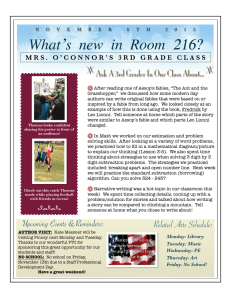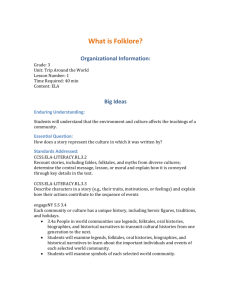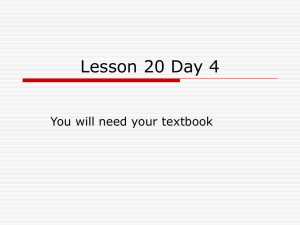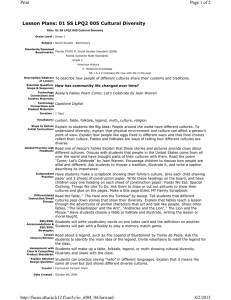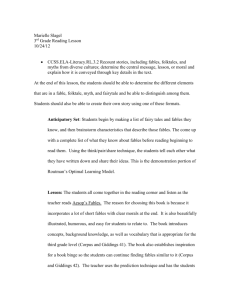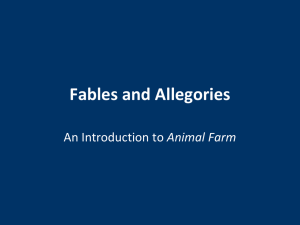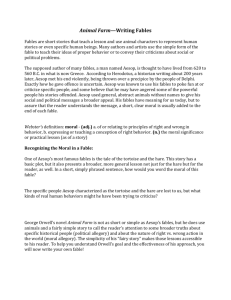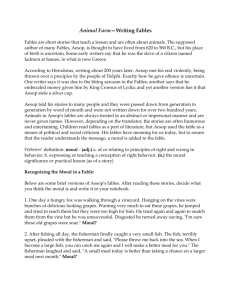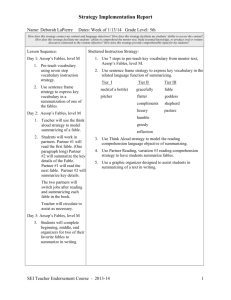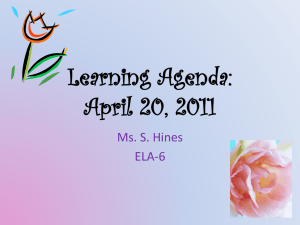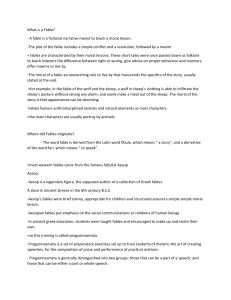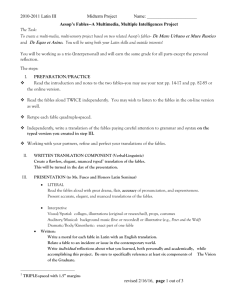Aesop`s Fables Aesop`s Fables, or Aesopica, is one of the primary
advertisement
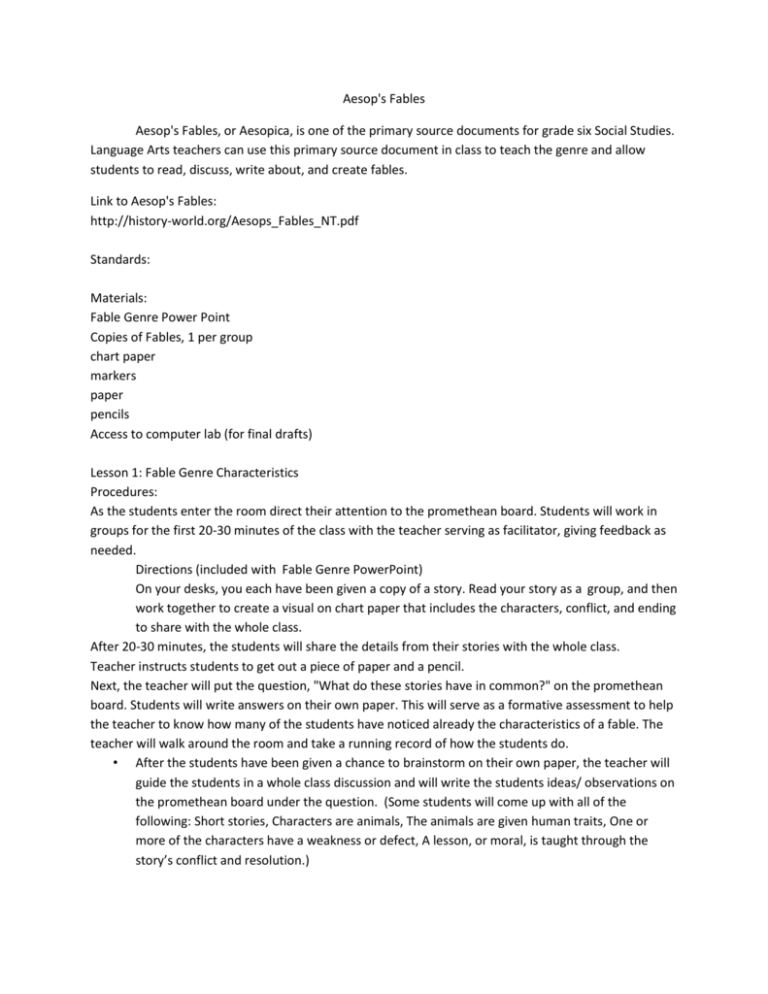
Aesop's Fables Aesop's Fables, or Aesopica, is one of the primary source documents for grade six Social Studies. Language Arts teachers can use this primary source document in class to teach the genre and allow students to read, discuss, write about, and create fables. Link to Aesop's Fables: http://history-world.org/Aesops_Fables_NT.pdf Standards: Materials: Fable Genre Power Point Copies of Fables, 1 per group chart paper markers paper pencils Access to computer lab (for final drafts) Lesson 1: Fable Genre Characteristics Procedures: As the students enter the room direct their attention to the promethean board. Students will work in groups for the first 20-30 minutes of the class with the teacher serving as facilitator, giving feedback as needed. Directions (included with Fable Genre PowerPoint) On your desks, you each have been given a copy of a story. Read your story as a group, and then work together to create a visual on chart paper that includes the characters, conflict, and ending to share with the whole class. After 20-30 minutes, the students will share the details from their stories with the whole class. Teacher instructs students to get out a piece of paper and a pencil. Next, the teacher will put the question, "What do these stories have in common?" on the promethean board. Students will write answers on their own paper. This will serve as a formative assessment to help the teacher to know how many of the students have noticed already the characteristics of a fable. The teacher will walk around the room and take a running record of how the students do. • After the students have been given a chance to brainstorm on their own paper, the teacher will guide the students in a whole class discussion and will write the students ideas/ observations on the promethean board under the question. (Some students will come up with all of the following: Short stories, Characters are animals, The animals are given human traits, One or more of the characters have a weakness or defect, A lesson, or moral, is taught through the story’s conflict and resolution.) • If the students don't come up with all of these characteristic, that is okay. The teacher will then change the slide to show the characteristics of a fable and the students will get to see how well they did at making observations on their own. • Students will need to add any of the characteristics to their own lists they did not initially include. • Exit Ticket: Summative Assessment: Students read another fable on their own and identify the traits of fables and cite examples on a piece of paper to turn in. (Included in powerpoint.) Writing lessons: The teacher will work through the writing process with the students as the write their own fables. They will use the original Aesop's Fables (mentor text) as a guide. Day 1: Brainstorming/ Pre-writing: Ask students to come up with two possible story ideas. Brainstorm possible characters and conflict. Students will turn and talk about their ideas and help each other determine the best story ideas. Outline: Students need to create a rough outline of their stories using a beginning, middle, end format. (Included in fable genre powerpoint.) Day 2: Drafting- Explain to students that this is the part of the process when they will actually begin writing their stories. Have them get out their brainstorming and outlining notes from the previous day. Have students write for 15 continuous minutes using their notes as a guide. Day 3: RevisingHave students trade papers with a peer and read one another's stories. After reading, students give verbal and written feedback to each other. (1 strength and 1 area in which to improve) Students will read their rough drafts and the comments from their peers. Using the peer critique, students will make any necessary changes as homework. Day 4: Students will type final drafts in the computer lab. This way students can use spell check and the help of the computer to fix any grammatical errors. The teacher will guide the student in formatting the stories appropriately.
